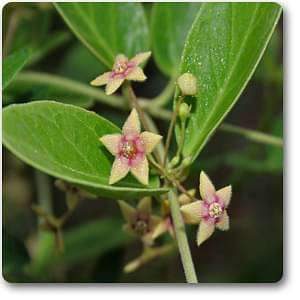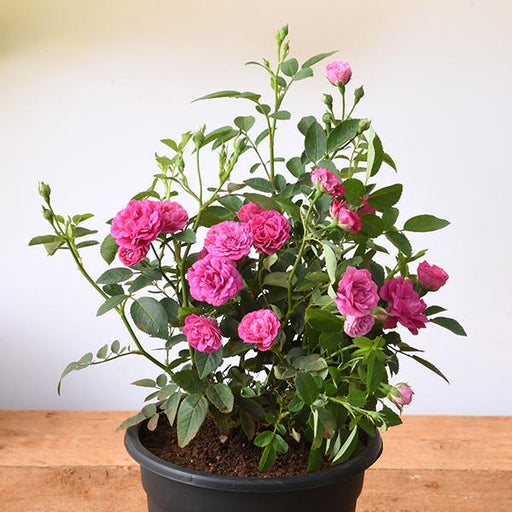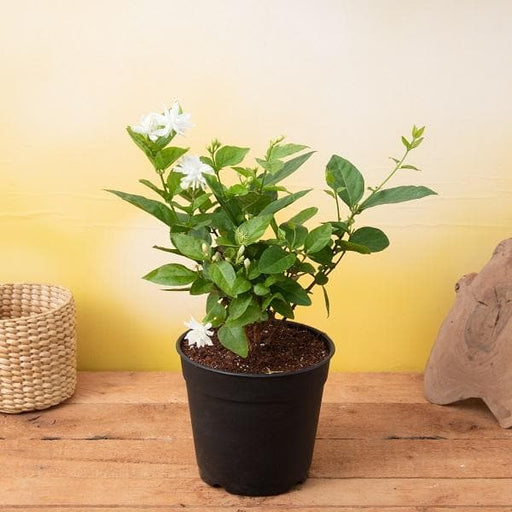
Ipecac - Plant
(MRP Inclusive of all taxes)
- Shipping ₹79 for entire order
- Dispatch in 7 days
- Country of origin: India

(MRP Inclusive of all taxes)
 Save 29%
Save 29%
Air Purifier Money Plant with Pot The Air Purifier Money Plant, also known as Pothos or Epipremnum aureum, is a stunning indoor plant that...
View full details
 Save up to 15%
Save up to 15%
Peace Lily, Spathiphyllum - Plant The Peace Lily, scientifically known as Spathiphyllum, is a stunning houseplant celebrated for its elegant white...
View full details
 Save 25%
Save 25%
Jasminum sambac, Mogra, Arabian Jasmine - Plant Jasminum sambac, commonly known as Mogra or Arabian Jasmine, is a fragrant flowering plant...
View full details
 Save 18%
Save 18%
Combo Constituents Includes the Parijat Tree (Night-Flowering Jasmine), a culturally significant plant with fragrant flowers. Description The Pari...
View full details
 Save 25%
Save 25%
Miniature Rose, Button Rose (Any Color) - Plant The Miniature Rose, also known as the Button Rose, is a charming and compact flowering plant that ...
View full details Save 25%
Save 25%
Damascus Rose, Scented Rose (Any Color) - Plant The Damascus Rose, also known as Rosa damascena, is a timeless symbol of beauty and romanc...
View full details
 Save 17%
Save 17%
Beautiful Fragrant Mogra, Arabian Jasmine Plant with Pot The Beautiful Fragrant Mogra, also known as Arabian Jasmine (Jasminum sambac), is...
View full details Save 15%
Save 15%
Pack of Vermicompost and Neem Cake for House Plants Transform your indoor garden with our premium Pack of Vermicompost and Neem Cake, spec...
View full details
Pack of Plant Growth and Flower Boosters Unlock the full potential of your garden with our Pack of Plant Growth and Flower Boosters! This ...
View full details Save 38%
Save 38%
Combo of Jeevamrut and Neem Raksha for Easy Growth and Protection of Houseplants Transform your indoor garden with our exclusive combo of ...
View full details Save 22%
Save 22%
Plant Nutrients Kit (Pack of 16) for a Healthy Garden Transform your garden into a lush paradise with our Plant Nutrients Kit, featuring 1...
View full details Save 16%
Save 16%
Combo of Top Plant Fertilizers Elevate your gardening game with our exclusive Combo of Top Plant Fertilizers, featuring two bags of premiu...
View full details Save 24%
Save 24%
Pack of 4 Additives to Make Soil Healthy and Nutrient Rich Transform your garden into a thriving ecosystem with our Pack of 4 Additives de...
View full details Save 30%
Save 30%
Transform your gardening experience with our premium Combo of Perlite and Vermiculite. This unique blend is designed to enhance soil aeration and ...
View full details Save 27%
Save 27%
Combo of 2 Vermicompost and Cocopeat - Enrich Your Soil Naturally! Transform your garden into a thriving ecosystem with our Combo of 2 Ver...
View full details
 Save 35%
Save 35%
Best 6 Plants for Perfect Indoor Garden Transform your living space into a lush oasis with our curated collection of the Best 6 Plants for a...
View full details
 Save up to 50%
Save up to 50%
Mini Succulent Garden Pack Transform your space with our Mini Succulent Garden Pack, featuring a delightful collection of 4 any variety beautiful s...
View full details
 Save 30%
Save 30%
5 Best Fragrant Plants Transform your garden or indoor space into a fragrant paradise with our curated selection of the 5 Best Fragrant Plants. Th...
View full details
 Save 24%
Save 24%
Set of 2 Bonsai Looking Grafted Adeniums Transform your indoor or outdoor space with our exquisite Set of 2 Bonsai Looking Grafted Adenium...
View full details Save 45%
Save 45%
Top 4 Die Hard Succulents Pack Transform your indoor or outdoor space with our Top 4 Die Hard Succulents Pack, featuring a curated selecti...
View full details
 Save 30%
Save 30%
5 Best Indoor Plants Pack Transform your living space into a lush oasis with our '5 Best Indoor Plants Pack.' This carefully curated collection fe...
View full details
 Save 25%
Save 25%
Set of 4 Evergreen Air Purifier Plant Pack Transform your indoor space into a lush, green oasis with our Set of 4 Evergreen Air Purifier Pla...
View full details| SrNo | Item Name |
|---|---|
| 1 | Ipecac - Plant |
The Ipecac plant, scientifically known as Cephaelis ipecacuanha, is a perennial herb native to Brazil and other parts of South America. Renowned for its medicinal properties, particularly its use in producing ipecac syrup, this plant has a rich history in traditional medicine. The roots contain alkaloids such as emetine and cephaeline, which have been utilized for their emetic and expectorant effects.
What makes Ipecac special is its dual role in both herbal medicine and as a fascinating ornamental plant. Its lush green foliage and delicate white flowers add aesthetic value to any garden. Historically, Ipecac was a staple in medicine cabinets, used to induce vomiting in cases of poisoning, showcasing its importance in emergency care.
One of the special features of the Ipecac plant is its ability to thrive in various soil types, making it adaptable for different gardening conditions. Additionally, its roots can be harvested sustainably, ensuring that the plant can continue to flourish while providing medicinal benefits.
The cultivation of Ipecac can have positive environmental impacts when done sustainably. By promoting biodiversity and supporting local ecosystems, Ipecac plants can contribute to soil health and provide habitats for various species. However, overharvesting in the wild has led to concerns about its conservation status, making responsible cultivation practices essential.
If you think caring for a plant is as easy as watering it and hoping for the best, think again! The Ipecac plant requires a bit of finesse. It thrives in well-drained soil and loves a warm, humid environment. So, if you’re living in a desert, you might want to reconsider your plant-parenting ambitions. Remember, this isn’t just any plant; it’s a diva that demands attention and the right conditions to flourish.
The Ipecac tree isn’t just a pretty face; it has some serious benefits! Traditionally, it’s been used for medicinal purposes, particularly as an emetic. That’s right, it can make you hurl, but in a pinch, it’s a lifesaver. Just don’t go overboard; you don’t want to turn your living room into a scene from a horror movie.
Want to multiply your Ipecac plant like rabbits? Propagation is the name of the game! You can do this through seeds or cuttings, but be prepared for a bit of a waiting game. Patience is a virtue, especially when you’re trying to grow your own little Ipecac army. Just remember, good things come to those who wait—unless you’re waiting for your pizza delivery, then it’s just torture.
toxicity. The Ipecac plant can be toxic if ingested in large quantities. So, if you have pets or small children, it’s best to keep this beauty out of reach. It’s like having a pet tiger; it looks great in your living room, but you wouldn’t want to cuddle with it.
The Ipecac plant has a storied past, dating back to the indigenous peoples of South America. They used it for medicinal purposes long before it became a staple in Western medicine. So, next time you admire your Ipecac plant, remember you’re gazing at a piece of history. It’s like having a tiny museum exhibit right in your home—just without the admission fee.
Did you know there are different varieties of the Ipecac plant? That’s right! From the classic Ipecacuanha to its lesser-known cousins, each variety has its own quirks and charms. It’s like a family reunion where everyone has a unique personality—some are more dramatic than others, but they all share the same roots.
If you’re impatiently waiting for your Ipecac plant to grow, you might want to grab a snack. This plant isn’t known for its speed; it takes its sweet time to reach maturity. But hey, good things come to those who wait, right? Just don’t forget to give it some love and attention while you’re waiting for it to become the towering beauty you envision.
The Ipecac plant is a bit of a light snob. It prefers bright, indirect sunlight, so don’t go shoving it in a dark corner and expecting it to thrive. Think of it as a plant that enjoys a good sunbathing session but doesn’t want to get scorched. So, find that perfect spot where it can soak up the rays without turning into a crispy critter.
Watering the Ipecac plant is an art form. Too much, and you’ll drown it; too little, and it’ll wither away. Aim for a Goldilocks approach—just the right amount! It’s all about finding that sweet spot where your plant feels loved but not overwhelmed.
The Ipecac plant is a bit of a soil connoisseur. It prefers well-draining soil that’s rich in organic matter. Think of it as a plant that enjoys a five-star dining experience. So, if you’re using plain old potting soil, it might just turn its leaves up at you.
Like any diva, the Ipecac plant can attract unwanted guests—pests! From aphids to spider mites, these little critters can wreak havoc on your green beauty. Keep an eye out and be ready to play pest detective. A little neem oil or insecticidal soap can go a long way in keeping your plant’s reputation intact.
Beyond its medicinal properties, the Ipecac plant can be a conversation starter at your next dinner party. “Oh, this? It’s just my Ipecac plant. Did you know it can induce vomiting?” You’ll be the life of the party, or at least the most interesting person in the room. Just remember to keep the conversation light—no one wants to hear about your last bout of food poisoning!
Ipecac is a tropical plant known for its medicinal roots, primarily used to induce vomiting in cases of poisoning. It’s like nature’s own emergency button, but let’s hope you never have to press it!
Ipecac thrives in the lush, humid jungles of Brazil and other parts of South America. It loves a warm climate, so think of it as the diva of the plant world, demanding just the right conditions to flourish!
Traditionally, Ipecac has been used to treat poisonings and as an expectorant for coughs. However, it’s not a one-size-fits-all remedy; think of it as a specialized tool in your medicine cabinet, not a daily supplement!
While Ipecac has its uses, it’s not without risks. Overuse can lead to complications, so it’s best to consult a healthcare professional before turning to this plant. Remember, just because it’s natural doesn’t mean it’s always safe!
The active compound, emetine, irritates the stomach lining, triggering the vomiting reflex. It’s like your stomach’s way of saying, “Enough already!” But be cautious; this isn’t a party trick you want to rely on!
Technically, yes! If you have a warm, humid environment and a green thumb, you can cultivate Ipecac. Just be prepared for its diva-like demands and remember, it’s not just a pretty plant; it’s a medicinal powerhouse!
Side effects can include nausea, diarrhea, and abdominal pain. It’s like your body’s way of protesting against the plant’s strong medicine. Always use it under medical supervision to avoid an unwanted drama!
The use of Ipecac for poisoning has fallen out of favor in recent years. Medical professionals now prefer other methods, so it’s best to leave the emergency responses to the experts.
Traditionally, the roots are dried and powdered to make a syrup. But unless you’re a trained herbalist, it’s best to leave the preparation to the pros. DIY medicine can be a slippery slope!
Ipecac has a rich history, dating back to indigenous tribes in South America who used it for medicinal purposes. It’s like the ancient superhero of the plant world, saving the day long before modern medicine!
Yes, Ipecac has been used as an expectorant for cough relief. However, it’s not the first choice anymore, so consider it more of a vintage remedy. Sometimes, old-school just doesn’t cut it in today’s medicine cabinet!
Ipecac can be found in specialty herbal shops or online. Just make sure you’re buying from a reputable source, because you want the real deal, not some wannabe plant trying to cash in on its fame!